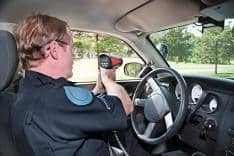 If you’re trying to predict who will receive the most traffic tickets in a given year, take a look at the type of car they drive.
If you’re trying to predict who will receive the most traffic tickets in a given year, take a look at the type of car they drive.
Quality Planning Corp., an auto insurance analytics firm, examined a year’s worth of traffic-citation data to rank cars that are most and least likely to be cited for traffic violations.
The manner in which vehicles are driven – and the resulting violations and crashes — affect the drivers’ car insurance rates. Quality Planning’s study links the appeal of certain vehicles to drivers who tend to take more risks on the road. Generally, the cars with high citation rates are widely perceived as powerful or sporty. The study was based on the number of moving violations per 100,000 miles of driving.
Vehicles with the highest percentage of violations | |||||
| Make | Model | Body Style | Violations per 100,000 miles driven | Average Age | % Male Drivers |
| Mercedes-Benz | SL-class | Convertible | 404% | 53 | 41% |
| Toyota | Camry Solara | Coupe | 349% | 50 | 39% |
| Scion | TC | Coupe | 343% | 30 | 39% |
| Hummer | H2/H3 | SUV | 292% | 46 | 73% |
| Scion | XB | Hatchback | 270% | 37 | 40% |
| Mercedes-Benz | CLS-63 AMG | Sedan | 264% | 46 | 58% |
| Acura | Integra | Coupe | 185% | 33 | 60% |
| Pontiac | Grand Prix | Sedan | 182% | 40 | 41% |
| Mercedes-Benz | CLK 63 AMG | Sedan | 179% | 47 | 44% |
| Volkswagen | GTI | Hatchback | 178% | 40 | 44% |
Raj Bhat, president of Quality Planning, calls the most-ticketed cars “spirited” vehicles. Drivers of the expensive Mercedes-Benz SL-class roadster had four times the average number of violations.
Both younger and older drivers are responsible for ticket problems. Scions, for example, are marketed to youthful drivers, and the study found that they typically are in their 30s. In contrast, the average age of the Mercedes-Benz SL-class driver is 53.
“If you tend to be not as rich, then maybe you tend toward the Scion,” Bhat says. “If you look at the Toyota Camry, it looks like a bread and butter car, but there is a sportier version, which is the Solara. If you can afford more, you get into the Mercedes-Benz.”
Car insurance rates and personal expression
Marty Brenner, an anger-management counselor based in Beverly Hills, Calif., says cars often are purchased to express aspects of the buyer’s personality. If someone wants to feel more powerful and important, they may buy an expensive, high-performance vehicle. “It’s about control,” he says.
Leon James, a professor of psychology at the University of Hawaii, studies the motivations of drivers. He finds that many people identify strongly with their automobiles. “A lot of people get involved in their cars personally,” he says. “They give their car a name. They talk to their car. They encourage their car up a hill.”
Auto insurance and aggressive drivers
Aggressive drivers often purchase cars that are known for their high performance, James adds. In contrast, responsible drivers tend to buy what he calls “soft” cars, such as minivans or vehicles that are highly rated for safety features.
Men long have been considered more likely to have serious traffic accidents than women. However, the Quality Planning study found that not all of the cars with highest percentages of traffic violations are driven predominately by males. For the No. 1 ranked Mercedes-Benz SL-class convertible, only 41 percent of the drivers were male. For the second-ranked Toyota Camry Solara coupe, 39 percent of the drivers were male.
Loretta Worters, spokesperson for the Insurance Information Institute, says this trend may reflect how women increasingly are taking over roles that traditionally have been held by men. “Women are driving more powerful cars,” she notes. “In years past, men have been the most aggressive drivers, but the trend is starting to shift. There are more women on the road than there were years ago, driving in similar patterns and undergoing similar stresses as men.”
Cautious drivers
Car insurance companies strive to measure risk when offering car insurance quotes to drivers. On the list of cars with low percentages of traffic violations, “the thing that stuck out was the preponderance of minivans and SUVs,” Bhat says. These “cautious” cars tend to be driven by people with children, he notes.



